In the UK we are not blessed by all things meteorological. Winters can be wet, cold and windy, as can the spring, and apart from possibly a couple of weeks, so can our summers. This breeds a tough hardy rider who does not mind getting stuck into a roaring headwind or potter out in monsoon conditions. However, it does pose a problem when the weather is just too disruptive and downright hazardous to our health to cycle.
Our only option then is to scurry away into a spare room or garage and hook the old steed onto a turbo trainer or set of rollers. Turbo training has come along way in the last five years with the development of Sufferfest. Gone are the days of sitting looking at a stopwatch in abject boredom completing 5 x 3 minute efforts wishing your life away. The bonus with Sufferfest and the like is that they tell you what to do, and keep you entertained while you're doing it which makes the time go faster...but not the pain. Nevertheless, you still feel slightly removed until the badman stops shouting at you and you can finally get off.
Interaction is the key, to feel involved, able to alter and change the variables and in doing so increase the realness of the session. The evolution and advancement of ANT+ speed/cadence monitors and power meters has allowed clever computer types to develop new and exciting ways to train interactively at an affordable level. The newest and probably most eagerly awaited of these 'platforms' is Zwift. Still in beta mode, Zwift pairs together the fun of a computer with the drudgery and woe of a turbo session; not an easy thing to do.
"The cure for the indoor training doldrums"
Zwift, for those who haven't yet heard of it, is described by its California-based creators as "an online community of like minded athletes united in the pursuit of a better indoor training experience. Created by cyclists for cyclists, Zwift brings the things we love about outdoor cycling indoors and adds a dose of fun!"
I appreciate this concept and fully understand what they are trying to do, but would take umbrage at the claim that Zwift 'brings the things we love about outdoor cycling indoors'! The things I love about outdoor cycling are: fresh air, sunshine, downhills, countryside and cafe stops (mostly cafe stops). None of this was in my garage the last time I checked, but perhaps I am being a touch pedantic.
Zwift hasn't been officially released yet but is currently in beta testing. I was fortunate enough to be one of the lucky few to get an invite to try the beta version of the Mac software. A link to download the Zwift app and instructions on setup were emailed to me. The bare minimum needed to run Zwift is:
- good internet connection
- rollers or a turbo trainer (from a selected supported list)
- ANT+ speed/cadence monitor
- and a laptop (either Windows or Mac).
Zwift also works with power meters, electronically controlled smart trainers, and indoor exercise bikes such as Wattbike and CycleOps Phantom. Once the Zwift software is installed on your computer, it will pair to your speed/cadence sensors and ask you to confirm.
At the moment you can't use Zwift on all turbo trainers, and the select few that have been calibrated are listed on the Zwift website. All makes of rollers are compatible, perhaps pointing to the fact that rollers are the closest replication to road riding indoors and have less in the way of variation in terms of resistance and settings between models.
Once I had downloaded the Zwift app I was asked to fill in some details: name, age, height and weight. Particular stress was made to be honest with your height and weight, as this would form a significant aspect of the Zwift computer matrix which would work out your speed and power in relation to the course.
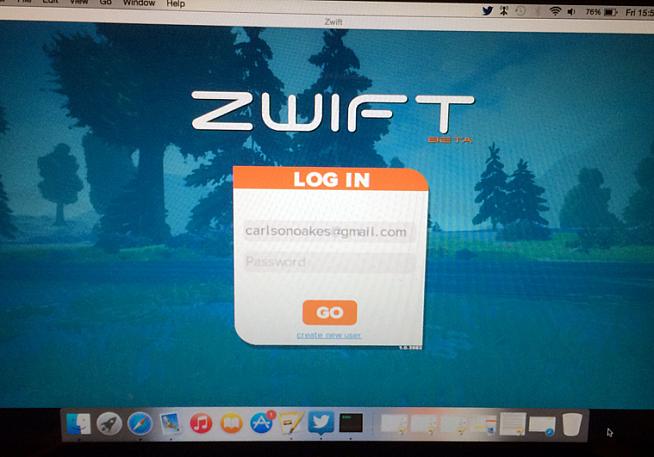
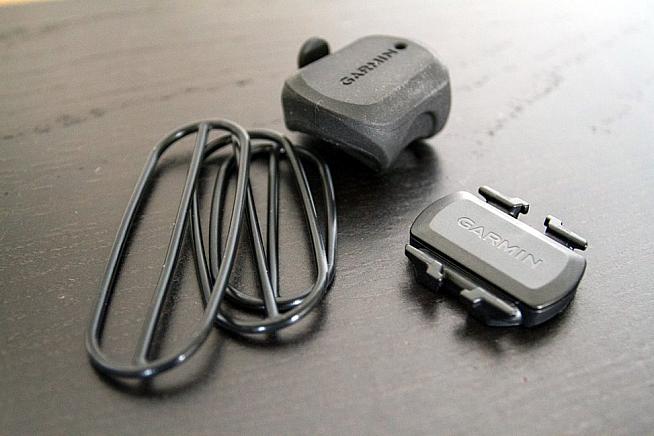
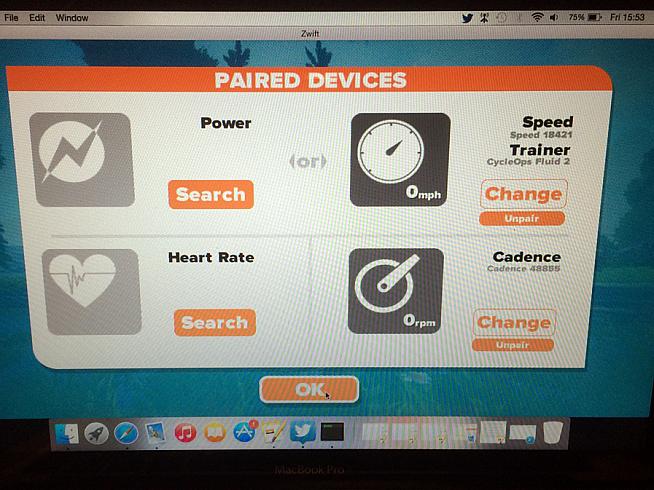
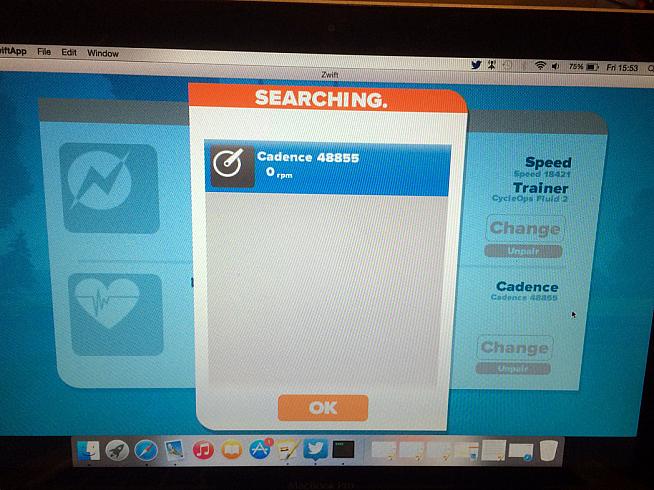
You can then personalise your rider with jersey, gloves, helmet, frame colour, wheels, etc. The more you participate, the more points you accumulate and the more bonuses you unlock. In time, the idea is that you'll be able to upgrade your 'virtual self' on Zwift with all manner of bling kit, with obvious potential for tie-ins with commercial partners like Rapha, Castelli etc.
Pimp your virtual ride
This level of customisation further cements Zwift as more than just a computer trainer, and emphasises its multiplayer computer game capabilities. Yes, the primary goal is to get the individual riding and fit, but with the Zwift platform the possibilities appear endless. The designers are talking about riding online Gran Fondos, racing concurrently with a Tour de France stage, and mass participation Zwift races. Zwift have been quick to encourage pro riders to get involved, with everybody's favourite 'The Jensie' and Laurens ten Dam both using Zwift as a training tool (ten Dam had actually been riding just before I started my first test; probably psyched him out when he saw me log on and thought better of going head-to-head with The Bison!)
The training itself takes place on a virtual course called 'Zwift Island'. Before you start you get a list of current riders on the island and are asked if you would like to join anyone for a ride. The only issue I have found with this is there is no search bar, and trawling through over a hundred riders to find your mate seems a bit lengthy. As I was a newbie this did no matter though and I clicked on 'Just Ride'.
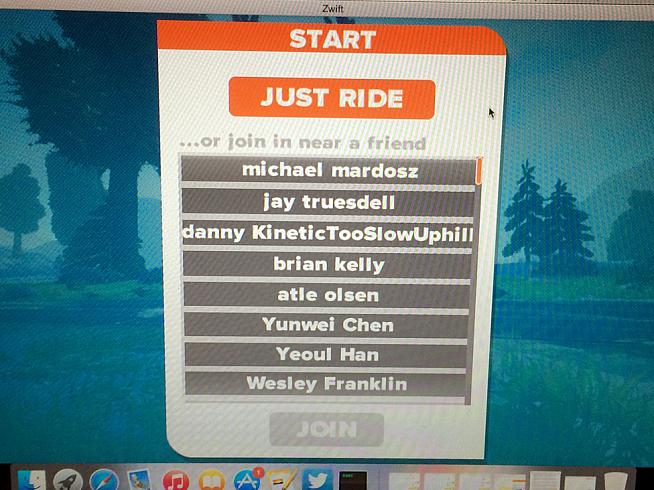
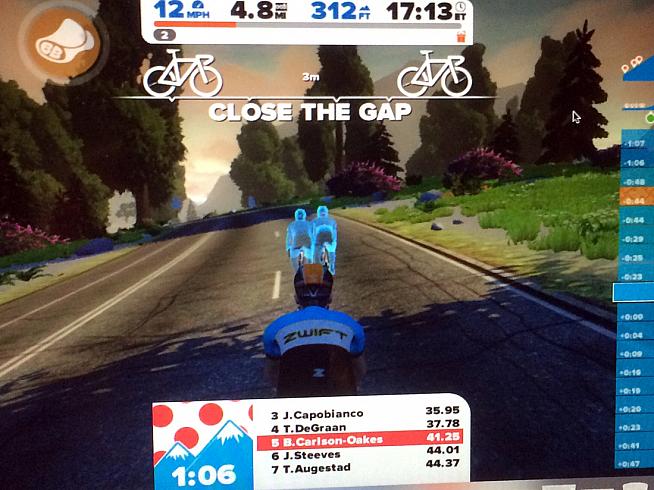
You are met with a massively impressive view of a town, marina, tarmac road and your rider standing one foot down at the side of the road. Pedalling on your turbo encourages the rider to start, be it after a couple of seconds delay, and you are off. I had my Garmin next to my computer to check if the cadence and speed matched up to Zwift's data. The cadence was spot on, and on the flats the speed was also comparable; once I climbed or descended a digital rise the computer adjusted its readings accordingly.
Riding the virtual course was very realistic, to the point where as you are climbing you can feel yourself getting more tired as the incline rises. On the descents you feel your legs spinning out as you try to search for the elusive speed record. It is not infallible though: any slipping of the rear wheel in the turbo causes glitches, and no matter how hard I pedalled or how big a gear I put it in on the downhill I could not get above 52mph.
The graphics are very good, and you can quite happily watch the world go by as you navigate the three mile loop. There appears to be everything you could want from a picture postcard vista. Snow-capped mountains in the background, lush green valleys, enormous redwood trees, jungle, wildlife and blue skies. If you watch carefully you may glimpse the Zwift blimp, but really you should be head down with eyes on the prize.
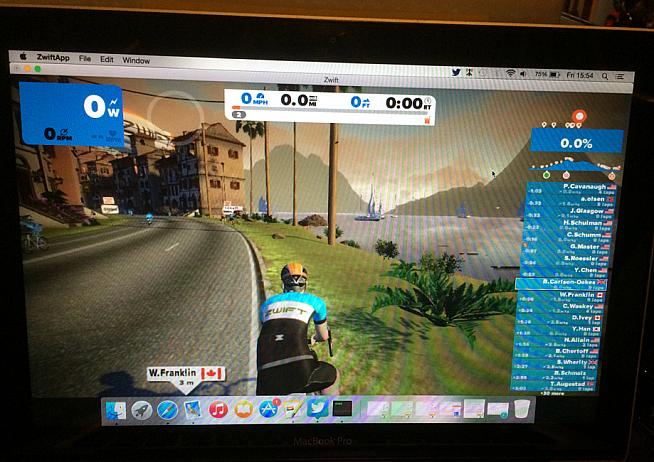
Breakfast burrito boost
There are three prizes on the version I have tested: a KOM, a sprinters' green jersey and orange leader's jersey for the fastest 3 mile lap. The 1km KOM comes first and is quite a test. I managed to get the 2nd quickest time on my opening lap of 41.25 seconds, but as it is constantly being challenged I was knocked down fairly quickly. The holder of the KOM gets a polka dot jersey to wear while he/she is riding around until their time is beaten. The same goes for the 200m sprint, which is an out-of-the-saddle explosive effort of under 8secs if you want to wear the green; in fact I think it was under 7secs when I finished. The final is the quickest lap where you get to wear the orange jersey of the leader; not yellow, obviously discussions are still ongoing with the ASO!
Every time you cross the line of one of these prizes you are allocated a reward boost, which for all you Nintendo fans out there is very reminiscent of Mariokart when you drive through the boxes except there are fewer mushrooms and less shooting. Instead, you get boosts to help increase your power-to-weight ratio which you can activate at the start of the climb, along with drafting boosts, aero boosts, and the breakfast burrito boost which prevents you being drafted by an opponent! For the training purist this is perhaps a step too far - I cannot remember the last time in a race I suddenly activated my 'increased power-to-weight boost' - but what it does do is make you keep riding hard.
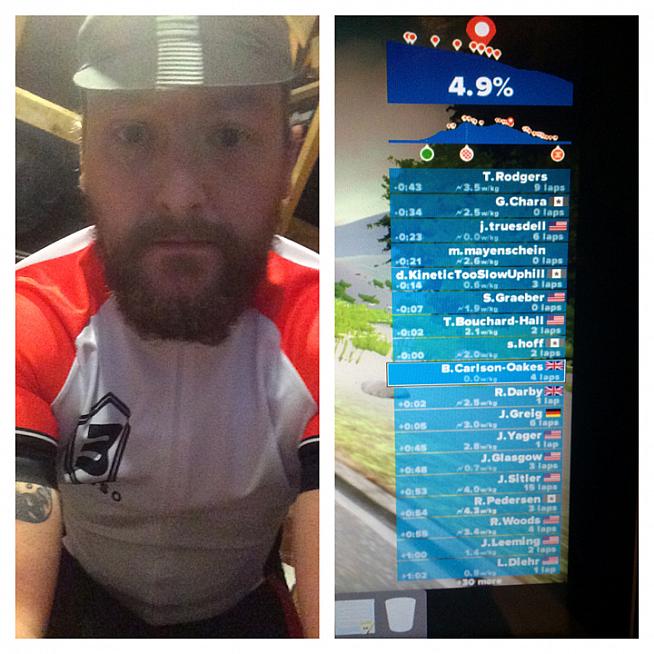
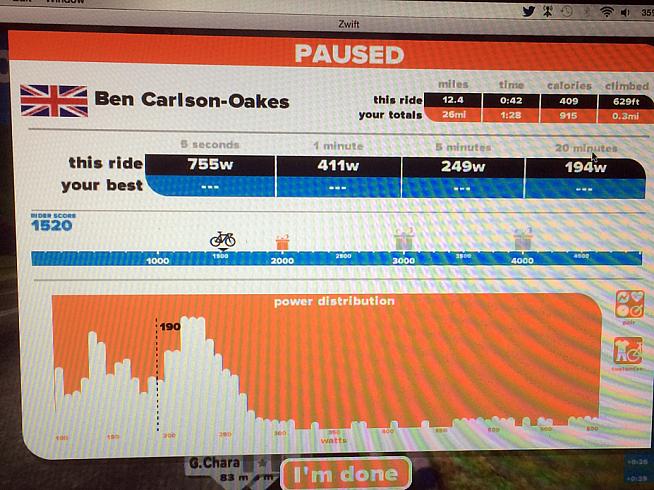

There is talk of the Zwift developers cleverly using accelerometers in iPhones and iPads to mimic steering to give an even more real experience. It looked as though this was being tested during my ride, as periodically a German chap called T. Grieg would appear slaloming the tarmac and riding into oncoming groups! Bit of work still needed there methinks.
All in all I am very impressed with Zwift. It fuses two of my favourite things, cycling and computer games. I can see some people thinking it is a bit gimmicky, and at the moment the three-mile course is fairly limited, but as the technology improves and the full version is rolled out the possibilities for Zwift seem limitless. Fancy participating in the 2016 Tour de France on an identical digital rendition of the course alongside the pros? Better book three weeks off now then, and get training! The other thing it did was break up the monotony of the turbo. I was quite happily entertained for 45 minutes, which flew by - and I didn't half feel it in my legs afterwards.
Interactive turbo training sessions are not new - Tacx have been around for several years with their gadgets and software wizardry, for example, and there are others. The big drawback with these tends to be the cost - for example, the full Tacx package will set you back close to £1000. Not ideal when you think that you will only turbo for around 3-4 months of the year.
Pricing of Zwift is still to be confirmed, but in the meantime I will definitely continue to use it and probably mix it up with a few Sufferfest videos until spring finally arrives. The full version is due to be launched later this year and I am eager to see what improvements and courses will be available. Until then, see you on Zwift Island.
Find out more at www.zwift.com
0 Comments





